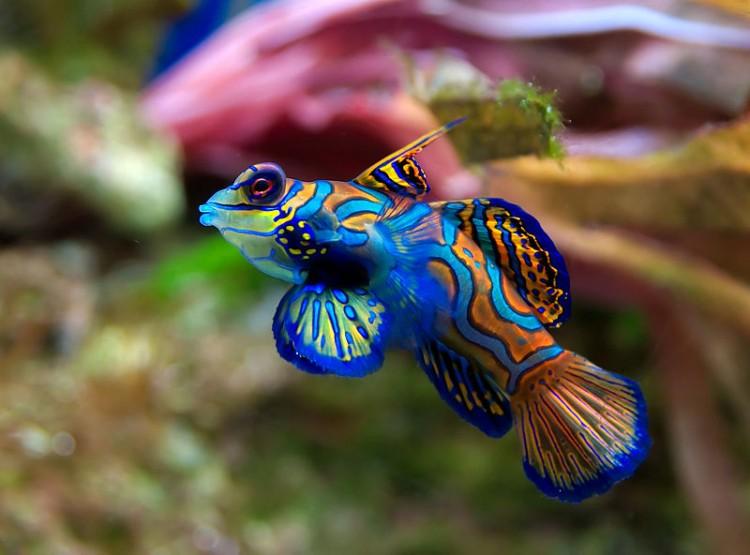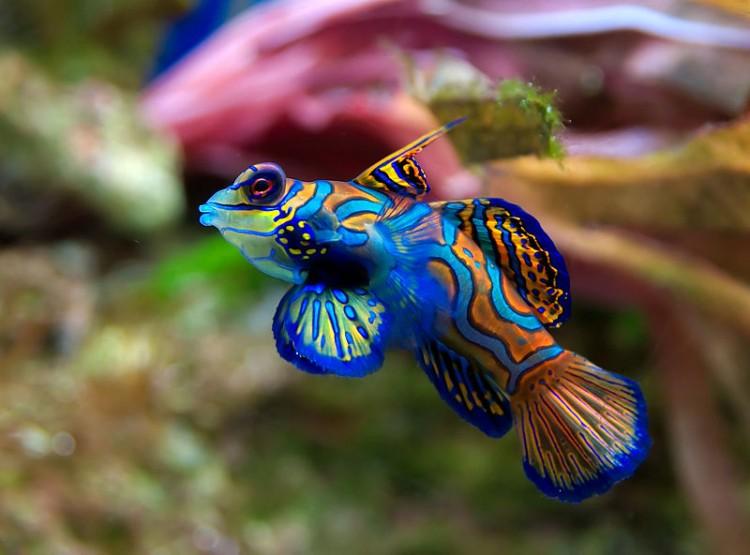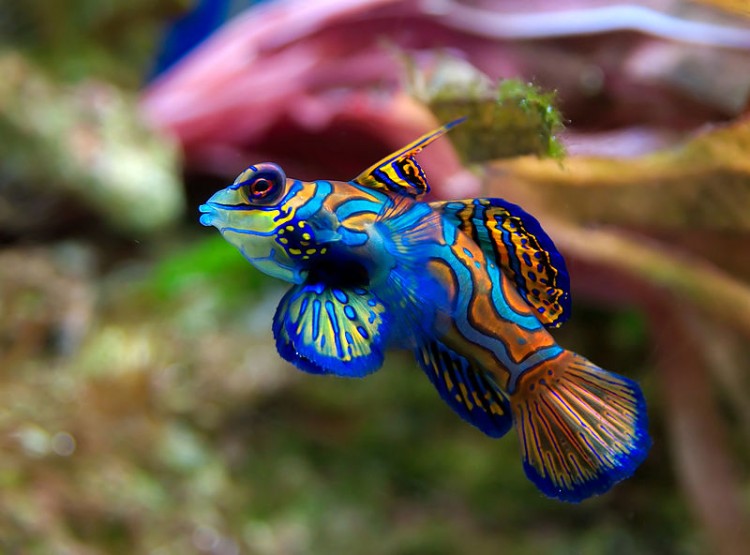Synchiropus splendidus is a brightly colored fish native to tropical reefs of the western Pacific.
The creature’s common names—the mandarinfish, green mandarin, or mandarin dragonet—allude to the vibrant hues painting its body, reminiscent of the Mandarin robes of Imperial Chinese courts.
The fish does not have scales. Instead, its skin is covered with an unpleasant mucous that is believed to help ward off predators and competitors.
Sometimes nicknamed “psychedelic mandarinfish,” these fish are slow-moving and shy marine animals that tend to dwell along the sandy bottoms of shallow reefs and lagoons.
Their beautiful coloration has made them popular as aquarium pets, but they are not easy to keep due to their dietary demands for live seafood.
Captive mandarinfish do have an advantage over other common aquarium fish, however. Their skin is resistant to Ichthyophthirius, a disease often plaguing other tank inhabitants.
The mandarinfish is sexual dimorphic, meaning that males and females are different in appearance. Males are significantly bigger, and they have a spine extending from their dorsal fins, used for territorial display.
The fish is generally considered to be a peaceful species, though in captivity, males are known to behave very aggressively toward each other and often cannot co-exist.
In the wild, groups of females are known to gather at set sites around dusk every day where males visit to spawn. During courtship, the female rests on the male’s pelvic fin, and, as if holding hands, the pair then rise about three feet above the reef, where they release eggs and sperm.
You can view a video of the romantic swim here.







